Sweeter homegrown cantaloupe – isn’t that the dream? Imagine biting into a juicy, intensely flavorful cantaloupe, bursting with sweetness, knowing you nurtured it from seed to table right in your own backyard. Forget those bland, store-bought melons! This isn’t just about growing cantaloupe; it’s about unlocking the secrets to cultivating the *perfect* cantaloupe, one that rivals anything you’ve ever tasted.
For centuries, cantaloupe has been a symbol of summer abundance and a refreshing treat enjoyed across cultures. From ancient Egypt, where melons were cultivated for their sweetness, to the sun-drenched fields of modern-day Italy and beyond, the cantaloupe has held a special place in our culinary history. But achieving that peak sweetness can sometimes feel like a gamble.
That’s where these DIY tricks and hacks come in! Let’s face it, growing your own food can be incredibly rewarding, but sometimes, nature needs a little nudge. If you’re tired of disappointing harvests and lackluster flavor, I’m here to share my tried-and-true methods for guaranteeing a sweeter homegrown cantaloupe every single time. We’ll delve into everything from soil preparation and watering techniques to sun exposure and harvesting tips. Get ready to transform your garden into a cantaloupe paradise!
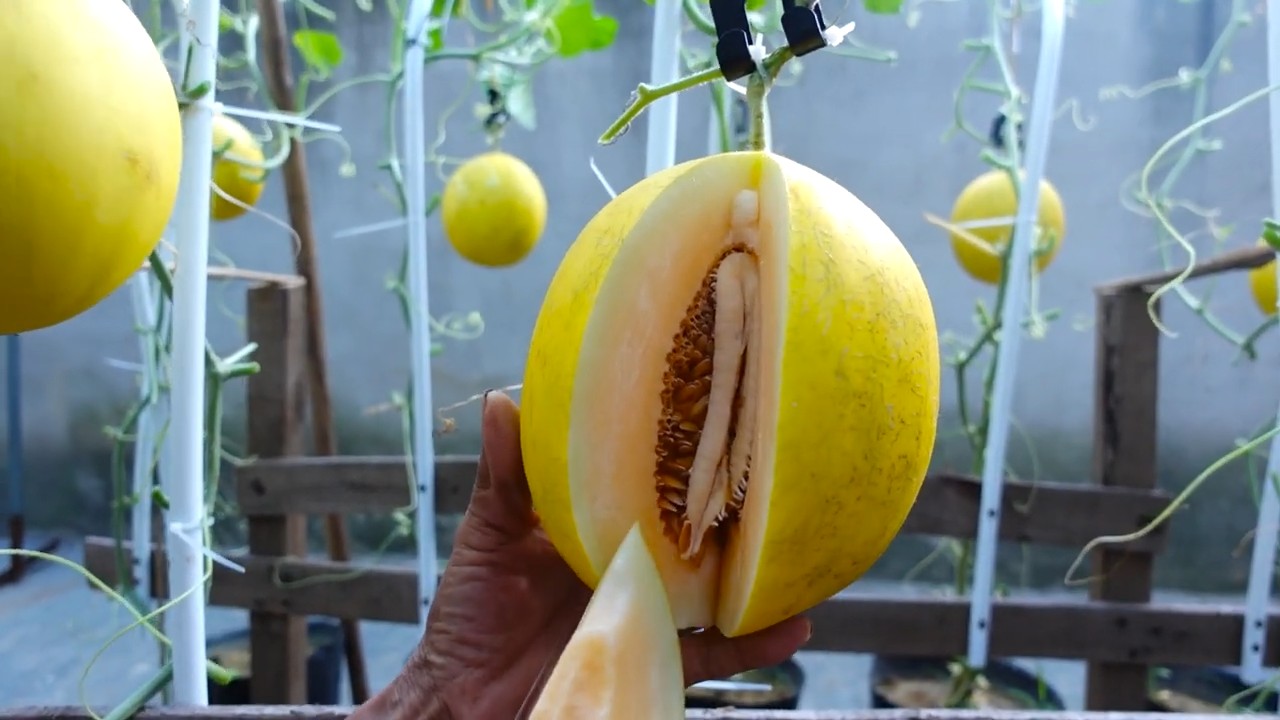
How to Grow the Sweetest Cantaloupe You’ve Ever Tasted!
Okay, let’s be honest. Store-bought cantaloupe can be a real letdown. Sometimes it’s bland, sometimes it’s mealy, and sometimes it just tastes…sad. But homegrown cantaloupe? That’s a whole different ballgame! When you grow your own, you can control the sweetness and flavor, and trust me, the results are worth the effort. I’m going to walk you through everything I’ve learned about growing cantaloupe that’s so sweet, it’ll make your taste buds sing!
Choosing the Right Cantaloupe Variety
First things first, not all cantaloupes are created equal. Some varieties are naturally sweeter and more flavorful than others. Here are a few of my personal favorites that consistently deliver amazing sweetness:
* ‘Athena’: This is a classic for a reason. It’s reliable, disease-resistant, and produces consistently sweet and juicy melons.
* ‘Ambrosia’: As the name suggests, this variety is truly divine. It has a rich, honey-like flavor and a smooth texture.
* ‘Hales Best Jumbo’: An heirloom variety known for its exceptional sweetness and aromatic fragrance. It takes a bit longer to mature, but the wait is worth it.
* ‘Sugar Cube’: If you’re short on space, this is a great option. It produces smaller, personal-sized melons that are incredibly sweet.
* ‘Galia’: Technically a hybrid between a cantaloupe and a honeydew, Galia melons have a unique, slightly spicy flavor and a satisfyingly crisp texture.
When you’re selecting your seeds or seedlings, be sure to check the seed packet or plant label for information about the variety’s sweetness and disease resistance.
Preparing Your Garden for Cantaloupe Success
Cantaloupe plants are sun-loving, heat-loving, and hungry! To give them the best possible start, you’ll need to prepare your garden bed carefully.
* Sunlight: Cantaloupe needs at least 6-8 hours of direct sunlight per day. Choose a location in your garden that gets plenty of sunshine throughout the day.
* Soil: Cantaloupe thrives in well-drained, fertile soil with a pH between 6.0 and 6.8. If your soil is heavy clay or sandy, amend it with plenty of organic matter, such as compost, aged manure, or leaf mold. This will improve drainage, aeration, and nutrient content.
* Fertilizer: Cantaloupe plants are heavy feeders, so it’s important to provide them with adequate nutrients. Before planting, amend your soil with a balanced fertilizer, such as 10-10-10, following the package instructions. You can also use a slow-release organic fertilizer.
* Spacing: Cantaloupe vines can spread quite a bit, so give them plenty of room to grow. Space your plants at least 2-3 feet apart in rows that are 4-6 feet apart.
* Raised Beds (Optional): I’ve found that cantaloupe grows particularly well in raised beds. Raised beds warm up faster in the spring, provide excellent drainage, and make it easier to control weeds.
Planting Your Cantaloupe
You can start cantaloupe seeds indoors 4-6 weeks before the last expected frost, or you can direct sow them in your garden after the soil has warmed up to at least 65°F (18°C). I usually prefer to start my seeds indoors to get a head start on the growing season.
Starting Seeds Indoors:
1. Sow Seeds: Fill seed trays or small pots with a seed-starting mix. Sow the seeds about ½ inch deep and water gently.
2. Provide Warmth: Cantaloupe seeds need warmth to germinate. Place the seed trays on a heat mat or in a warm location.
3. Keep Moist: Keep the soil consistently moist, but not soggy.
4. Provide Light: Once the seedlings emerge, provide them with plenty of light. Place them under grow lights or in a sunny window.
5. Harden Off: Before transplanting the seedlings into your garden, you’ll need to harden them off. This means gradually exposing them to outdoor conditions over a period of 7-10 days. Start by placing them in a sheltered location for a few hours each day, gradually increasing the amount of time they spend outdoors.
Direct Sowing Seeds:
1. Prepare Soil: Make sure your soil is well-prepared and warmed up.
2. Sow Seeds: Sow the seeds about ½ inch deep and 2-3 feet apart.
3. Water Gently: Water the seeds gently to avoid disturbing them.
4. Thin Seedlings: Once the seedlings emerge, thin them to one plant per hill.
Transplanting Seedlings:
1. Choose a Cloudy Day: Transplant your seedlings on a cloudy day or in the late afternoon to minimize stress.
2. Dig Holes: Dig holes that are slightly larger than the root balls of the seedlings.
3. Gently Remove Seedlings: Gently remove the seedlings from their pots, being careful not to damage the roots.
4. Place Seedlings in Holes: Place the seedlings in the holes and backfill with soil.
5. Water Thoroughly: Water the seedlings thoroughly after planting.
Caring for Your Cantaloupe Plants
Once your cantaloupe plants are in the ground, it’s important to provide them with the care they need to thrive.
* Watering: Cantaloupe plants need consistent moisture, especially during hot, dry weather. Water deeply and regularly, aiming to keep the soil consistently moist but not waterlogged. Avoid overhead watering, as this can promote fungal diseases. Drip irrigation or soaker hoses are ideal.
* Fertilizing: Side-dress your cantaloupe plants with a balanced fertilizer every 2-3 weeks. You can also use a liquid fertilizer, such as fish emulsion or seaweed extract.
* Weeding: Keep your garden bed free of weeds, as they can compete with your cantaloupe plants for nutrients and water. Mulching with straw or hay can help suppress weeds and retain moisture.
* Pruning (Optional): Some gardeners prune their cantaloupe vines to encourage fruit production. You can prune off any non-fruiting side shoots to direct the plant’s energy towards developing the main fruits.
* Pollination: Cantaloupe plants rely on bees and other pollinators to produce fruit. If you’re not seeing a lot of bee activity in your garden, you can hand-pollinate the flowers. To do this, use a small paintbrush to transfer pollen from the male flowers to the female flowers. Female flowers have a small fruit-like swelling at the base of the flower.
* Protecting from Pests and Diseases: Cantaloupe plants can be susceptible to a variety of pests and diseases, including aphids, squash bugs, cucumber beetles, powdery mildew, and fusarium wilt. Inspect your plants regularly for signs of pests or diseases and take action promptly. Use organic pest control methods whenever possible, such as insecticidal soap, neem oil, or diatomaceous earth. For fungal diseases, improve air circulation around the plants and avoid overhead watering.
The Secret to Sweetness: Stressing Your Cantaloupe (Slightly!)
This is where the magic happens! To really boost the sweetness of your cantaloupe, you need to stress the plants slightly during the final stages of fruit development. This encourages them to concentrate sugars in the fruit.
* Reduce Watering: About 1-2 weeks before you expect your cantaloupes to ripen, reduce watering. Allow the soil to dry out slightly between waterings. Don’t let the plants wilt completely, but don’t keep the soil constantly moist either.
* Stop Fertilizing: Stop fertilizing your cantaloupe plants about 2-3 weeks before harvest. This will prevent the plants from putting energy into vegetative growth and encourage them to focus on ripening the fruit.
* Elevate the Fruit (Optional): Placing the developing cantaloupe on a piece of wood, brick, or even a plastic container can help prevent rot and improve air circulation around the fruit. This can also help the fruit ripen more evenly.
Important Note: Don’t overdo the stress! If you deprive your cantaloupe plants of water for too long, the fruit will become small and dry. The goal is to create a mild stress that encourages the plants to concentrate sugars in the fruit, not to kill the plants.
Harvesting Your Sweet Cantaloupe
Knowing when to harvest your cantaloupe is crucial for getting the sweetest, most flavorful fruit. Here are a few signs that your cantaloupe is ready to pick:
* Color Change: The skin of the cantaloupe will change from green to a tan or yellowish color.
* Aromatic Fragrance: A ripe cantaloupe
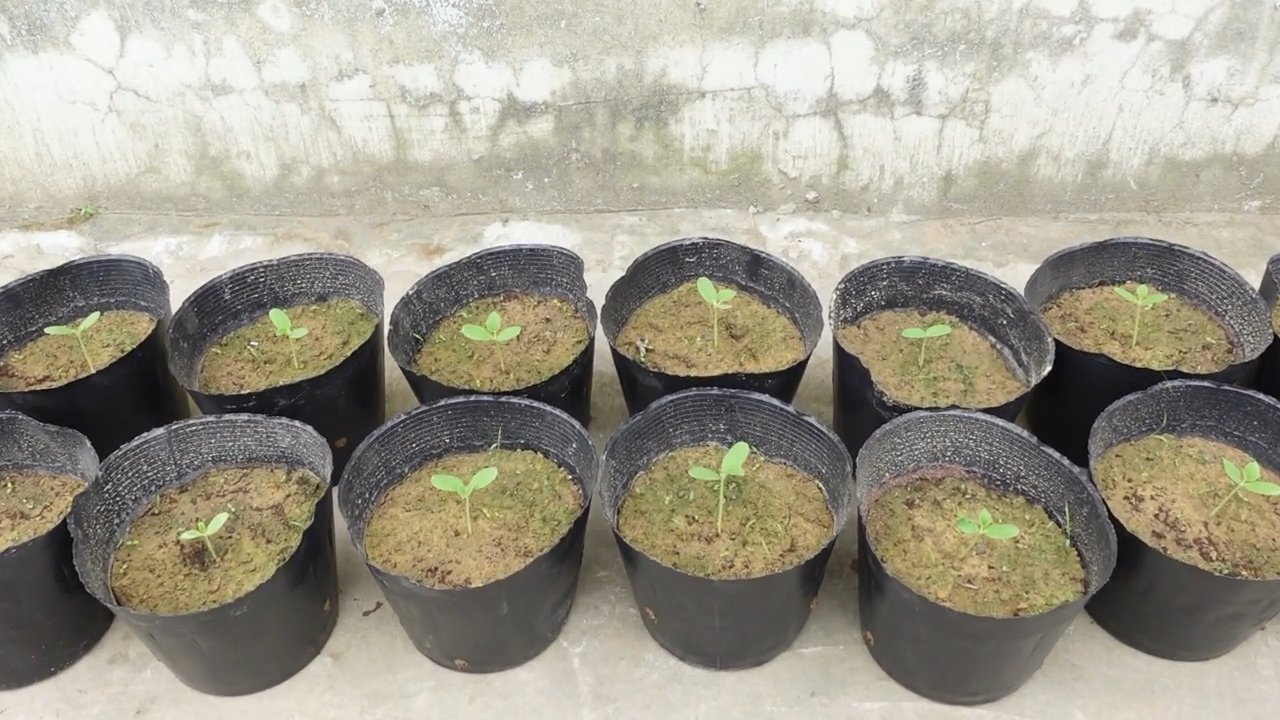
Conclusion
So, there you have it! Transforming your homegrown cantaloupe from bland to bursting with sweetness is not only achievable, it’s surprisingly simple. This DIY trick, focusing on strategic watering and harvesting techniques, is a game-changer for anyone who’s ever been disappointed by a lackluster melon. It’s a must-try because it empowers you to take control of the flavor profile of your produce, ensuring that every bite is a taste of summer perfection.
Think about it: no more bland, watery cantaloupe destined for the compost bin. Instead, imagine slicing into a vibrant orange melon, its aroma filling your kitchen with the promise of intense sweetness. This is the power of understanding and applying these simple techniques.
But don’t stop there! Experimentation is key to unlocking the full potential of your garden. Consider these variations to further enhance your cantaloupe growing experience:
* **Honey Infusion:** A week before your anticipated harvest, try injecting a small amount of diluted honey (1 part honey to 3 parts water) into the stem of the cantaloupe. This can give an extra boost of sweetness, but be careful not to overdo it, as it can attract pests.
* **Sun-Kissed Sweetness:** After harvesting, place your cantaloupe in a sunny spot for a day or two. This allows the sugars to further concentrate, resulting in an even sweeter flavor. Just be mindful of extreme heat, which can cause the melon to spoil.
* **Companion Planting Power:** Plant basil or marigolds near your cantaloupe. These companion plants are known to deter pests and attract beneficial insects, contributing to a healthier and more productive plant, which in turn can lead to sweeter fruit.
* **Soil Enrichment:** Before planting, amend your soil with plenty of compost and well-rotted manure. Rich, fertile soil provides the essential nutrients that cantaloupe needs to develop its signature sweetness. Consider adding a small amount of bone meal to provide phosphorus, which is crucial for fruit development.
Ultimately, the best way to discover what works best for your garden and your taste buds is to get your hands dirty and try it out. We are confident that this DIY trick will significantly improve the sweetness of your homegrown cantaloupe.
We wholeheartedly encourage you to give this a try. It’s a small investment of time and effort that yields a significant return in flavor. And most importantly, share your experiences with us! Let us know what worked, what didn’t, and any variations you discovered along the way. Your insights will help other gardeners achieve cantaloupe perfection. Post your photos and stories on our social media pages using #SweetCantaloupeDIY. We can’t wait to see your success!
Frequently Asked Questions (FAQ)
Q: Why is my homegrown cantaloupe not sweet?
A: There are several reasons why your homegrown cantaloupe might lack sweetness. The most common culprits include:
* **Insufficient Sunlight:** Cantaloupe needs at least 6-8 hours of direct sunlight per day to develop its sugars.
* **Overwatering:** Excessive watering, especially as the fruit nears maturity, dilutes the sugars and results in a bland flavor.
* **Poor Soil Quality:** Cantaloupe thrives in rich, well-drained soil. Nutrient-poor soil can hinder sugar development.
* **Premature Harvesting:** Harvesting before the cantaloupe is fully ripe prevents the sugars from reaching their peak.
* **Variety:** Some cantaloupe varieties are naturally sweeter than others. Research and choose a variety known for its sweetness.
* **Weather Conditions:** Extended periods of cloudy or cool weather can inhibit sugar production.
Q: How do I know when my cantaloupe is ripe and ready to harvest?
A: Determining ripeness is crucial for achieving maximum sweetness. Here are some key indicators:
* **Color Change:** The skin of the cantaloupe should change from green to a tan or yellowish color.
* **Aroma:** A ripe cantaloupe will have a sweet, musky aroma, especially near the stem end.
* **Stem Slip:** The stem should easily separate (slip) from the vine with a gentle tug. If you have to force it, the cantaloupe is likely not ripe.
* **Sound:** A ripe cantaloupe will have a slightly hollow sound when tapped.
* **Ground Spot:** The spot where the cantaloupe rests on the ground should turn from white to a creamy yellow.
Q: How much should I water my cantaloupe plants?
A: Water deeply but infrequently, especially as the fruit begins to develop. Aim for about 1-2 inches of water per week, depending on rainfall and soil drainage. Reduce watering significantly in the week or two leading up to harvest. This concentrates the sugars and enhances sweetness. Avoid overhead watering, as it can promote fungal diseases. Drip irrigation is an excellent option for delivering water directly to the roots.
Q: What kind of fertilizer should I use for cantaloupe?
A: Cantaloupe benefits from a balanced fertilizer with a slightly higher phosphorus content. A 5-10-5 or 6-12-6 fertilizer is a good choice. Apply fertilizer according to the package directions, typically at planting and again when the vines begin to run. Avoid over-fertilizing with nitrogen, as this can promote leafy growth at the expense of fruit production. Consider using organic fertilizers like compost tea or fish emulsion for a more sustainable approach.
Q: Can I improve the sweetness of cantaloupe after it’s been harvested?
A: While you can’t magically transform a bland cantaloupe into a super-sweet one after harvest, you can improve its flavor slightly. Allowing the cantaloupe to sit at room temperature for a day or two after harvest can help the sugars to further develop. Placing it in a sunny spot can also enhance sweetness, but be careful to avoid excessive heat.
Q: What are some common pests and diseases that affect cantaloupe, and how can I prevent them?
A: Common pests include aphids, squash bugs, and cucumber beetles. Diseases include powdery mildew, downy mildew, and fusarium wilt. Preventative measures include:
* **Crop Rotation:** Avoid planting cantaloupe in the same spot year after year.
* **Good Air Circulation:** Space plants adequately to promote air circulation and reduce humidity.
* **Watering Practices:** Avoid overhead watering and water early in the day so foliage can dry quickly.
* **Insect Control:** Use insecticidal soap or neem oil to control pests.
* **Disease-Resistant Varieties:** Choose cantaloupe varieties that are resistant to common diseases.
* **Sanitation:** Remove and destroy any infected plant material.
Q: Is it possible to grow sweet cantaloupe in containers?
A: Yes, it is possible to grow sweet cantaloupe in containers, but it requires careful attention. Choose a large container (at least 20 gallons) with good drainage. Use a high-quality potting mix and provide adequate sunlight, water, and fertilizer. You may also need to provide support for the vines as they grow. Select a compact or bush-type cantaloupe variety that is well-suited for container gardening.
Q: How does this DIY trick specifically help in achieving a sweeter homegrown cantaloupe?
A: This DIY trick focuses on two key aspects: controlling water intake and harvesting at the optimal time. Reducing water intake as the cantaloupe ripens concentrates the sugars within the fruit, leading to a sweeter flavor. Harvesting at the peak of ripeness ensures that the cantaloupe has had ample time to develop its full sugar content. By combining these two techniques, you maximize the potential for a sweet and delicious homegrown cantaloupe.

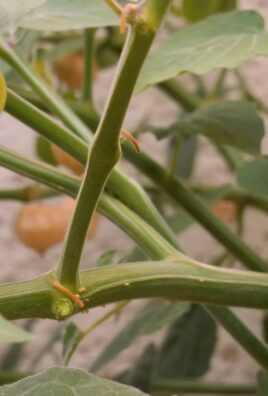
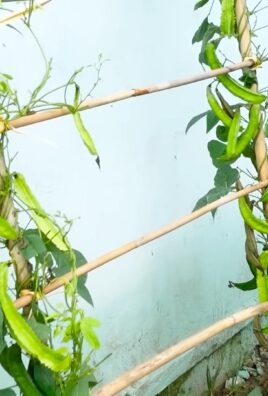
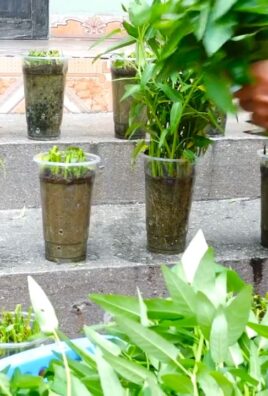
Leave a Comment